Otter Gap
I call this Otter Gap. When visiting, if you suddenly see aquatic birds scrambling to leave the area, the chances are good that there are North American River Otters hunting nearby.
The tip of land on the left is part of Marsh Island and to the right is Foster Island. The Waterfront Trail bridge spans the gap, at least for now. (Click on the highlight to learn more about the potential bridge and trail replacement.) To pinpoint this location on a map of Union Bay Click Here and then zoom in.
Aquatic birds appear to fear the otters more than eagles. I suspect it is because the otters can approach from underwater, remaining completely hidden, until it is too late for a bird to escape.
On the other hand, I have only seen the otters eating fish.
I suspect a beauty contest between otters, birds, and fish would be easily won by the birds. However, the otter's lack of brilliant coloring makes sense. Their most exceptional senses are their hearing and their sense of smell. They are often underwater in places with limited visibility, where bright colors might warn away their prey.
In fact, their whiskers may be more valuable than their eyesight when it comes to catching fish in the dark. It makes sense that brilliant good looks to attract a mate, who does not see well, is not a logical priority.
Another important, but easily overlooked, physical attribute of otters is the webbing between their toes. If you take a second look at the photo above, just below the surface you can faintly see triangles of light-colored webbing between the brightly-colored toenails. Normal swimming is apparently powered by their feet, for occasional bursts of speed or sudden changes of direction, they utilize their powerful tails.
Their ears and nostrils automatically close when they submerge according to the information in Wikipedia. Their thick fur tends to shed water and keep them quite warm. In every way, they are a perfect example of form fitting function.
With somewhat larger fish they are likely to head for shallow water.
With very large fish they pull them onshore.
Medium-sized fish they will sometimes eat like an ice cream cone.
Smaller fish, which they can more easily control, are consumed while sticking their heads above water and chewing. Given the width of their necks, and how extensively they chew their food, the inner part of their throats must be surprisingly restrictive.
For comparison, a Great Blue Heron has a much narrower neck, however herons simply swallow their fish whole. Without teeth, the herons don't have the option of chewing, plus I suspect their digestive acids are far stronger. I have also seen a heron's neck nearly double in width to allow a large fish to pass through. The variety in nature's fish-eating solutions is amazing.
Curiously, whenever there were no people on the walking bridge, the otters were quite comfortable with utilizing the structure. They also seemed surprisingly social. They went out of their way to gently touch each other.
This same closeness also occurred in the water, during which neither otter shied away from the experience.
During their first winter, the young stay close to their mother and I suspect the three I saw this week were a mother and two young. It seemed to me that the "younger" two might have had shorter whiskers.
I also suspect it was the two young who were galavanting around on the bridge deck.
It is interesting to compare their bodies with that of a Long-tailed Weasel.
They are both in the same family. Both have short legs and long necks. Both are predators that can chase prey into dark hidden places. Both have long streamlined bodies and large pointed snouts containing keen olfactory capabilities. Of course, River Otters can weigh as much as thirty pounds while a Long-tailed Weasel is listed as less than eight ounces.

This otter continually kept its nose less than an inch above the deck surface. I suspect it was logging a history of scents.
I am not sure if the purpose behind rubbing the surface was to leave a scent, pick up a scent or simply squeeze water out of its fur.
At one point it turned and did some personal grooming in the area right above its tail. (Don't try this at home. You might hurt yourself.)
The otter's maneuver reminded me of a Belted Kingfisher I saw a week earlier.
The Kingfisher also has short legs which cannot reach its back.
To groom its tail or lower back it must use the flexibility of its neck and its long bill. Once again nature solves a similar problem in a slightly different manner.
The kingfisher also uses its bill to groom its wings, which is not an otter issue.
While maybe not as gorgeous as birds, I do find otters oddly compelling with their streamlined bodies, fluid motions, and gentle social behaviors.

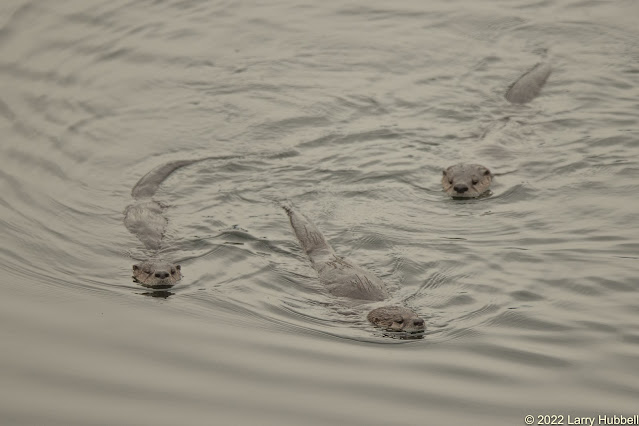



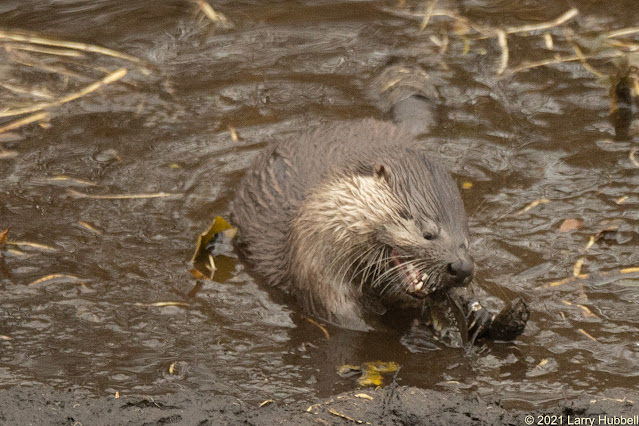
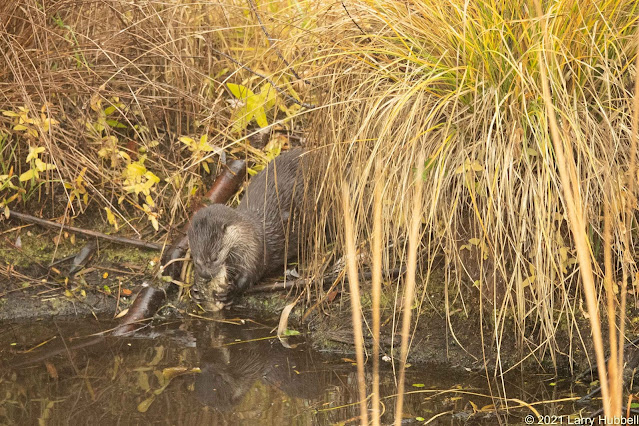

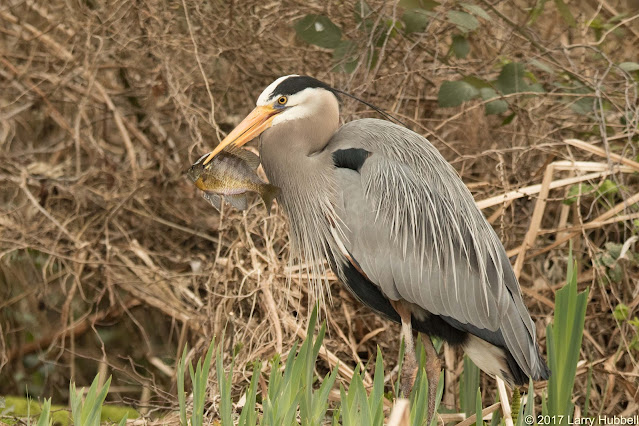





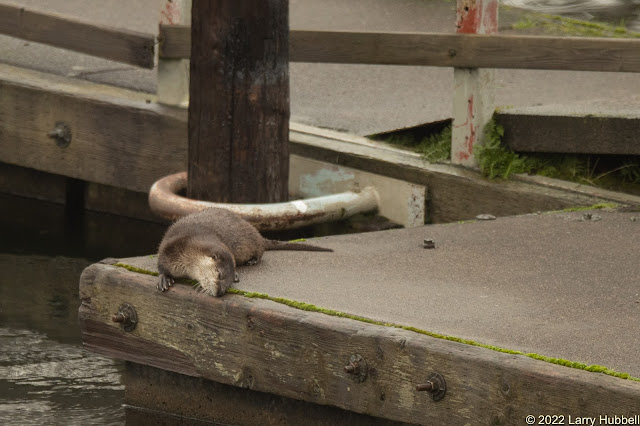



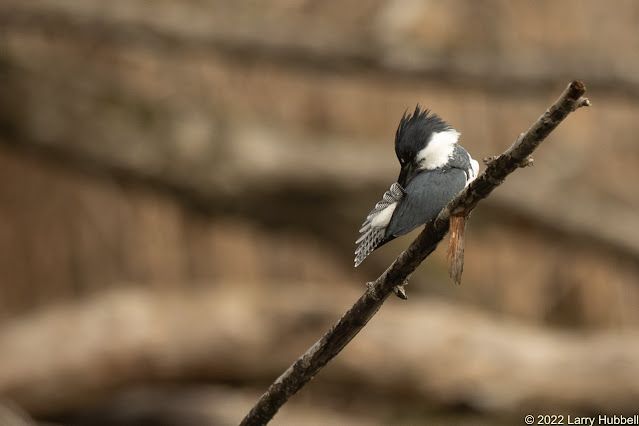

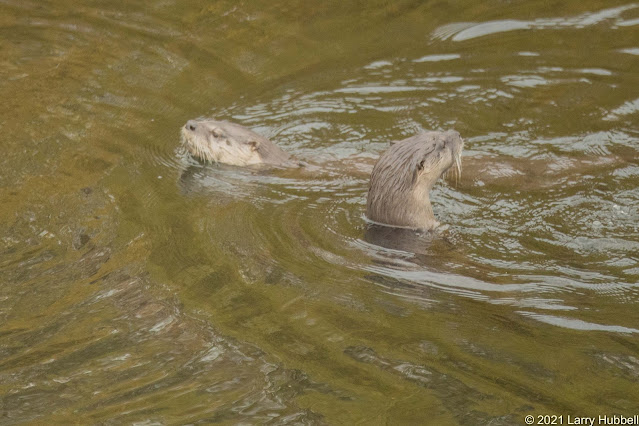
No comments:
Post a Comment